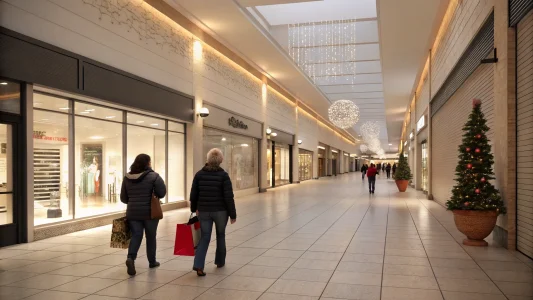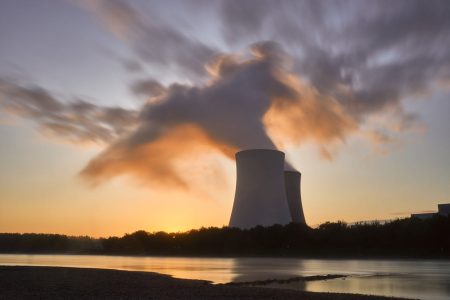Portfolio diversification is a common strategy for safe, effective long-term investing. However, figuring out healthy asset allocation in an online-focused world can be challenging. There are a lot of options, and it is difficult to gauge risk in newer investment scenarios.
For instance, treasury and risk management opportunities for insurance companies, pension funds, and family offices are becoming increasingly important. Tokenized real estate is also a popular option that decreases liquidity risk while maintaining higher yields, making it a valuable addition to a diversified portfolio.
Many have turned to real-world assets, like real estate, as a way to spread out risk while still generating dependable returns. While these investment options are effective, they aren’t easy to access.
This has opened up the door to a unique evolution in the physical asset space. It is reshaping how investors view not just real estate in general but high-level, commercial real estate investments.
We’re talking about the tokenization of real-world assets. Let’s take a closer look at this innovative and effective development in the investing playbook and the benefits it offers to an excited and diverse new generation of investors looking to use limited resources to generate wealth as effectively as possible.
Table of Contents
ToggleWhat Are Real World Assets?
The basic definition of a real-world asset is simple: It is a tangible, physical asset in the real world. This can be anything from a residential property or diamonds to a valuable baseball card.
Real-world assets tend to be static, illiquid investments. They also outperform traditional stock investments. This makes them a popular, albeit complex, way to diversify a portfolio.
But wait. There’s more. While the traditional definition is still true, that isn’t the only meaning of the term “real-world assets.”
The ongoing digital revolution has repurposed the concept of a “real-world asset” to apply not just to physical assets but to the digitization of those investments. Also called RWAs, this form of real-world assets refers to the security tokenization of tangible assets into fractionalized, digital ownership shares.
Dmitry Mishunin, CEO of the blockchain security company HashEx and member of the Forbes Technology Council, summarizes this concept well by saying, “Real-world assets, also called RWAs, are tokens that represent certain physical assets. It can be as property, objects, bonds, or others. Just like other tokens, these function on the blockchain through smart contracts, and one token can amount to a whole object as well as its part.”
How Do Real World Assets Work?
Using blockchain technology to securely digitize and fractionalize ownership of a physical asset is a powerful and synergistic evolution in the history of investing. But, how does it work?
On a fundamental level, tokenization divides the ownership of an asset into several shares. While not identical, this is similar to the way stocks represent ownership of a company. But how does the RWA model work with a more tangible, physical investment vehicle? Let’s consider one of the most permanent physical assets in existence: real estate.
Tokenizing a piece of property breaks down the ownership of that real estate into easily manageable digital assets. Investors can buy, swap, and sell these without going through the hassle of a traditional real estate transaction.
The best part? You can apply this concept on a massive scale, including in a commercial setting.
For instance, RedSwan CRE is digitally fractionalizing the ownership not just of buildings but of large commercial real estate portfolios. The innovative investment company is using blockchain technology to tokenize commercial real estate assets, offering digital ownership of real-world assets in the process.
As more digital platforms facilitate these investments and institutional interest grows, these assets are innovating how investors view previously difficult-to-access areas of the investment world—especially, real estate.
What Are the Benefits of Real World Assets in Real Estate?
Real-world assets have several key benefits. These do not just facilitate traditional investing. They are providing unparalleled growth opportunities and opening new frontiers for wealth generation on a previously unforeseen level. From security to access to simplicity, here are some of the biggest benefits that come from RWAs.
1. Provide Rapid Access to Illiquid Assets
One of the most obvious restrictions to real estate is its illiquidity. You can’t dissolve a real estate investment rapidly without taking a serious hit on its value. Even then, HomeLight reports that it can still take days or weeks to complete a rapid real-estate transaction, whereas you can sell a stock or cryptocurrency in minutes.
Tokenization provides a digital asset that represents the physical asset. This is much easier to move between owners at a moment’s notice.
2. Lower Barriers to Entry
Real estate is an age-old investment vehicle. It is also a classically inaccessible one.
No matter how far back you go, civilization has revolved around the owning, appreciating, and selling of property and the buildings and resources it contains. In many cases, the wealthiest have fought over this ownership, while others have sat on the sidelines, unable to participate.
Tokenization makes it easier for the latter to get in on the action. Where it might cost an investor $100,000 or more to set up a simple rental property on their own, companies allow anyone to invest in multi-million-dollar deals with thousands of dollars at a time.
3. Facilitate Secured Ownership
Buying and owning real estate is a complex process. Even after a purchase, you need to consider maintenance and regulatory compliance.
If you’re renting the property, there are recurring, time-consuming hassles that come with that, as well. This creates a number of risks that can undermine the value of a property and even threaten ownership if things go badly enough (such as failing to pay taxes or a mortgage).
RWAs give investors the option to buy into real estate on any level with a much lower risk threshold. They can own a portion of the title that rests securely on the blockchain, where fraud isn’t an issue. Then, when the time comes, they can sell without trouble.
4. Improve Mobility and Liquidation Options
Blockchain technology doesn’t just help with security. It can also increase transaction times.
By tokenizing and putting real-world assets, like real estate, on-chain makes it easier to track and shift ownership. Investors can move from one on-chain RWA to the next, liquidating and buying as they go.
This revolutionizes the flexibility and mobility of investors within the real estate world. Buying into a commercial property no longer requires an exceptionally long-term plan. You can buy and sell based on your particular investment strategy.
The Growing Passion for Investing and the Need for Asset Diversification
As the 21st century has progressed, the demographics of investors have begun to shift. In the past, you were able to classify most involved individuals as either active professional investors or lifetime “passive” investors. As assets have digitized and diversified, the kind of investor, their motivations, and their wealth generation options have multiplied.
At the same time, many younger investors have moved away from traditional investment models. For instance, one Bank of America survey found that 75% of young investors don’t consider stocks and bonds a viable way to generate above-average returns.
It’s also worth revisiting the accessibility concept of tokenization in the context of younger investors. Terence Odean, a finance professor at the University of California Berkeley, points out that younger investors also have more options thanks to fractional shares. This gives younger investors with limited resources the ability to dive into unique investment opportunities that they traditionally would have had to work their way up to.
This willingness and interest from a diverse and growing number of investors who are critical of the status quo makes any effective new investment model worth consideration. With that said, some newer investment opportunities are completely uncharted territory. They lack a robust track record of real-world assets, which means they come with more risks.
Linking the accessibility of digital investing to classic, stable, and profitable real-world assets like commercial real estate gives investors access to new opportunities. It is rewriting the script, and opening up the doors to a new generation of real estate investors ready to change the real estate landscape.
Transforming Real Estate With RWAs
The investment world is in flux. Stock market swings are normal. Inflation is eroding the power of cash. Technologically powered investing innovations may come with higher levels of risk.
However, the tokenization of real estate is one case where the advantages of both new and old investment strategies are coming together—and the results are synergistic. Real-world assets are transforming commercial real estate investment strategies for the better. They are bringing in new investors with money to spend and are creating never-seen-before levels of security, mobility, and liquidity in an investment sector that is infamous for its slow-moving speed.
It is a changing of the guard that institutional investors should not ignore. Instead, they should consider how RWAs can factor into their own portfolios and how they can make the most of this blossoming area of the real estate market in the years ahead.















